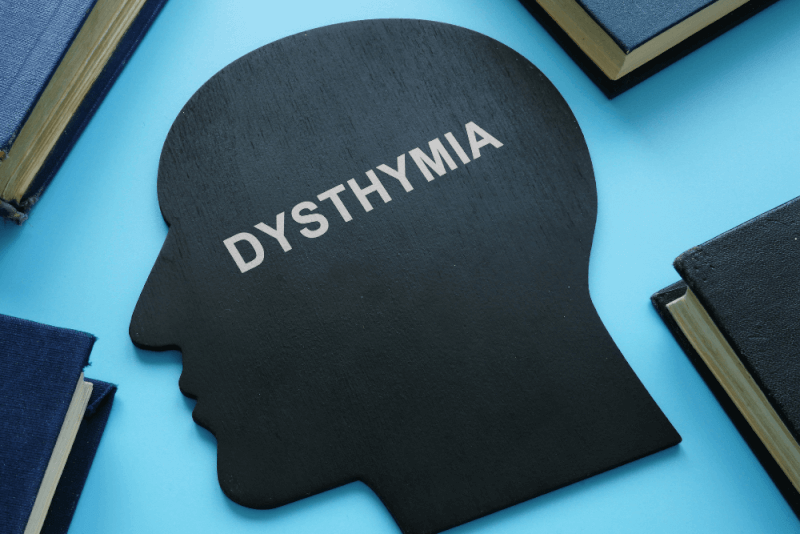What is Atypical Autism?
Autism, or Autism Spectrum Disorder (ASD), is a neurodevelopmental disorder characterized by limited verbal and non-verbal communication and social interaction issues. Symptoms begin in infancy and persist throughout life. Autism spectrum disorder has many symptoms and should not be reduced to speech problems alone.
Atypical autism describes milder cases within the autism spectrum that do not meet all the criteria for a diagnosis of autism.
Symptoms of Atypical Autism
Symptoms of atypical autism are similar to those of autism but are less pronounced.
-
Repetitive behavior patterns,
-
Increased or decreased sensory sensitivity,
-
Deficiencies in verbal or non-verbal communication,
-
Delayed language and speech skills,
-
Developmental problems in neurological abilities,
-
Exhibiting atypical or inappropriate social behavior,
-
Unresponsiveness to physical pain,
-
Unusual body movements,
-
Anxiety towards unfamiliar people and situations,
-
Eating and sleeping problems,
-
Not deviating from routines, overreacting if routines are changed,
-
Obsessive behaviors with objects and words,
-
Being obsessive and detailed about a particular subject,
-
Classifying objects based on sensory features rather than their intended use,
-
Inability to understand abstract concepts,
-
Incorrect use of pronouns and possessive suffixes,
-
Lack of imagination,
-
Inability to understand others' moods,
-
Tendency towards loneliness,
-
Lack of emotional facial expressions,
-
Lack of response to others' actions,
If one or more of these symptoms are present, consulting a specialist is necessary.
Causes of Atypical Autism
The exact cause of atypical autism, like autism, is unknown. It is thought to result from genetic mutations and environmental factors. Some theories suggest that these genetic mutations in babies are due to chemical imbalances in neurological pathways during pregnancy.
A more widespread belief is that it results from immune-genetic, environmental, neuroanatomical, psychiatric, and neuropsychiatric factors. Therefore, a significant portion of the research focuses on genetic studies, especially on chromosomes 2, 7, and 17.
Environmental and familial risk factors include premature birth, indiscriminate use of drugs during pregnancy, infections during pregnancy, vitamin D deficiency, advanced maternal and paternal age.
Screening Tests
To diagnose atypical autism, it is first necessary to determine whether the person is in a risk group. For this, two-stage screening tests are conducted. In the first stage, information is obtained from people who spend a lot of time with the child.
In the second stage, information is gathered from specialists. These tests consist of intensive questions.
Exclusion Tests
If the screening tests are positive, it is necessary to exclude neurological and medical pathogens that may cause these symptoms. For this, necessary exclusion tests must be conducted. Additionally, genetic tests are required to exclude possibilities like Fragile X and Rett syndrome.
DSM-5 and ICD-10
After all these stages, tests necessary for diagnosis are conducted. These tests are more detailed than the screening tests. They are administered under the supervision of specialists and include many different tests, each aimed at revealing a specific condition.
ADI-R
This test differentiates between individuals with and without autism. It aims to measure the social and communication skills of individuals.
ADOS-G
This test focuses on mental and physical abilities. Children participate through play, while adults participate through conversation.
CARS
Prepared for second-level screening tests, this test is also used for diagnosis. It consists of 15 questions, each valued up to 4 points.
SRS
This test involves the participation of individuals' relatives. Consisting of 65 questions, it helps to specify the characteristics of individuals.
After these tests, autism is classified. The most commonly used classification criteria are DSM-5 and ICD.
Treatment of Atypical Autism
There is no definitive cure for any type of autism, including atypical autism. However, individuals in this group have the highest chance of moving out of the autism spectrum with early diagnosis, special education, and psycho-educational methods.
With the support of their family and close ones, individuals have a high chance of continuing their normal lives through tailored education and applications. These therapies and applications help individuals with atypical autism improve their skills and communicate correctly.
The educational programs and applications used in the treatment of atypical autism are based on scientific principles. These criteria and methods are determined by the National Autism Center and the National Professional Development Center in the USA.
Applications Used in the Treatment of Atypical Autism
-
Extinction procedures,
-
Picture exchange communication system,
-
Computer-assisted instruction,
-
Speech-generating devices,
-
Parent-implemented interventions,
-
Self-management,
-
Structured work systems,
-
Pivotal response training,
-
Visual supports,
-
Naturalistic teaching procedures,
-
Video modeling,
-
Social stories,
-
Differential reinforcement,
-
Response interruption and redirection,
-
Functional communication training,
-
Functional behavior assessment,
-
Discrete trial training,
-
Skill analysis,
-
Reinforcement,
-
Time delay,
-
Antecedent-based interventions,
-
Prompting,
Medications for Atypical Autism
The primary focus in treating atypical autism is education and applications. Medications are not commonly used in treatment. However, antipsychotic drugs can be used to address specific issues like anxiety, overreaction, and aggression.
If Atypical Autism is Not Treated
Failure to treat atypical autism disrupts individuals' normal developmental processes. It can lead to difficulties in meeting their own needs and socio-personal problems in later life. Additionally, the lack of treatment can cause significant stress for the individual's family and close ones.
What is Atypical Behavior?
The behaviors observed in atypical autism are referred to as atypical behaviors. These behaviors primarily involve deficiencies in verbal or non-verbal communication. Individuals with atypical autism may struggle to express themselves and fully understand what others are trying to convey. They often have difficulty interpreting metaphors, gestures, and facial expressions.
Atypical behavior patterns also include variations in sensitivity to touch, taste, and sight. Some individuals may have heightened sensitivity, while others may have reduced sensitivity. Lastly, repetitive behaviors, also known as stereotypical behaviors, are common in atypical autism.
Nutrition in Atypical Autism
As with other types of autism, nutrition is a crucial part of the treatment for atypical autism. Families must pay attention to certain aspects of their children's diets. Key points to consider in nutrition are:
- Ensuring meats in their diet are lean and well-cooked.
- Preferring meat from naturally grazed animals over grain-fed ones for red meat consumption.
- Opting for traditionally prepared products like sausages and pastrami, while avoiding processed deli meats like sausages and salami that contain additives.
- Including organ meats in their diet, ensuring these products are disease-free.
- Choosing naturally raised poultry for white meat consumption.
- Avoiding seafood due to high mercury content and toxins in farm-raised fish, but consuming seaweed and sea beans for their chlorophyll and heavy metal-binding properties.
- Including eggs in their diet, preferably farm eggs, and consuming them raw if possible. If raw consumption is not feasible, cooking methods should prioritize keeping the yolk raw.
- Including vegetables, especially green leafy ones, raw in their diet. Adults should prefer wild greens, with purslane being particularly rich in Omega-3.
- Avoiding fried potatoes, although a small amount can be added to meals.
- Regularly consuming onions and garlic for their antioxidant properties and ability to aid in heavy metal detoxification.
- Preferring green olives and ensuring they are thoroughly desalted.
- Limiting high-sugar fruits and being cautious with phenol-containing fruits.
- Excluding cow and sheep milk, opting for goat milk and goat milk products instead.
- Limiting legume consumption to three times a week, soaking them for at least 48 hours, and changing the water every 12 hours before consumption.
- Excluding soy from the diet.
- Including nuts in their diet, consuming about two handfuls daily, ensuring they are unsalted and raw.
- Using healthy fats like olive oil, butter, and fish oil, and avoiding margarine.
- Adding flaxseed to their diet, as it is rich in Omega-3, second only to fish.
- Avoiding fried foods to prevent cell oxidation.
- Eliminating gluten due to common intolerance, using non-GMO corn and rice flour as substitutes.
- Allowing all types of tea, but limiting coffee consumption, with an occasional cup of Turkish coffee being acceptable.
- Including homemade pickles and probiotic-rich foods in their diet.
- Avoiding adding extra salt to meals.
- Using spices, ensuring they are free of mold.
- Eliminating refined sugar and products made with it from the diet.
- Consuming chocolate based on the individual's copper levels.
- Ensuring honey is organic and considering molasses made from the natural sugar of fruits.
- Avoiding sweeteners.
- Eliminating carbonated drinks and commercial fruit juices.
- Drinking enough water to keep urine light-colored.
Speech in Atypical Autism
In the early years, individuals with atypical autism experience speech delays and problems. However, these issues often improve with age and education, though some speech disorders may persist into adulthood.
Common speech disorders in individuals with atypical autism include incorrect use of pronouns, echolalia, and difficulties understanding spoken language.
Differences Between Atypical Autism and Autism
The differences between autism and atypical autism are not clearly defined, leading to ongoing debates among experts. The primary distinction is that individuals diagnosed with autism continue to exhibit symptoms despite education, while those with atypical autism may see some symptoms diminish with age and education.
Both conditions exhibit similar communication issues, and repetitive behaviors and obsessions are common in young children with either condition . However, individuals with atypical autism often show improvement in these behaviors with age. Even if such behaviors persist, they become less disruptive over time.
Self-care skills are generally better in individuals with atypical autism, though both conditions exhibit similar interests in limited areas. Additionally, psychiatric problems such as depression and panic attacks may occur in individuals with atypical autism.
Signs of Improvement in Atypical Autism
Early diagnosis and personalized treatment, education, and nutrition programs can yield positive results in a short time. Signs of improvement include:
- Increased ability to express oneself
- Improved motor skills
- Reduced obsessions
- Enhanced language skills
- Decreased behavior problems
- Cognitive improvements
- Better attention functions
- Increased social skills
Atypical Autism and Play Therapy
Play therapy is a therapeutic approach that helps individuals explore their emotions and thoughts. It allows individuals to express themselves freely, process emotions, and develop basic skills.
Play, a natural part of childhood, is used in many health problems and yields successful results. In the context of atypical autism, play therapy is one of the most reliable ways to help children develop social skills and regulate their emotions.
Goals of play therapy are determined based on the individual's needs. This personalized approach ensures that specific needs are effectively met. Regardless of the chosen method, play therapy offers an effective and dynamic approach to supporting individuals with autism.
How Does Play Therapy Support Individuals with Atypical Autism?
The primary strength of play therapy in supporting individuals with atypical autism lies in meeting their needs and facilitating communication according to their strengths and preferences. This enables educators to communicate comfortably and naturally with individuals with atypical autism.
Various techniques are used in play therapy to facilitate communication and social interactions for individuals with atypical autism. Various tools are used to achieve this goal, allowing individuals to explore and express themselves freely without judgment.
Advantages of Play Therapy
The advantages of play therapy for individuals with atypical autism include:
Improved Communication
Play therapy provides a natural environment for individuals with atypical autism to express themselves. This includes verbal and non-verbal communication, helping them express their thoughts and feelings more easily and effectively.
Enhanced Social Skills
The supportive nature of the play environment helps develop social skills. During therapy, individuals learn social cues and have opportunities to interact with others.
Emotional Expression and Regulation
Through therapy, individuals learn to express and regulate their emotions. Games help regulate emotions and increase emotional well-being.
Increased Self-Esteem
Therapy helps individuals with atypical autism develop self-confidence and self-esteem, reinforcing their sense of accomplishment and self-perception.
Reduced Stress
Playing reduces stress levels in individuals with atypical autism. Therapy provides a safe environment to cope with stressful situations.
Principles of Play Therapy in Atypical Autism
For play therapy to be successful in atypical autism, it must adhere to certain principles. These principles create safe and engaging environments for individuals to communicate, explore, and learn.
Creating a Therapeutic Environment
The first principle is to create a therapeutic environment. This term describes a safe and comfortable environment that prevents distractions. The environment must include materials, toys, and sensory objects that can attract individuals' attention and meet their needs, and these items must be well-organized.
Additionally, clear boundaries and rules must be established in the therapeutic environment. Predictability and consistency help individuals with atypical autism feel secure.
Establishing Rapport and Trust
Another crucial factor in the success of play therapy is establishing rapport and trust between the individual with atypical autism and the therapist. A warm and empathetic environment, active listening, and genuine interest help accurately identify the individual's needs.
Achieving this rapport requires patience, as individuals with atypical autism set the pace of interactions. Consistency and reliability are key to building trust in play therapy.
Balancing Structured and Unstructured Play
An important aspect of play therapy is balancing structured and unstructured play. Structured play helps individuals regulate their emotions and strengthen social interactions, including role-playing games and board games.
Unstructured play allows individuals to explore and express themselves freely, using their imagination and expressing themselves in their own way.
Techniques Used in Play Therapy
Various techniques are used in play therapy to meet the unique needs of individuals. These techniques can be combined to enhance children's development.
Symbolic Play
Also known as role-playing, symbolic play involves using various tools or symbols to represent something else. Children can express their thoughts and feelings through these games.
Various toys and art materials are used to encourage children's participation in symbolic play, creating a safe platform for them to explore their inner world and communicate.
Developing Social Skills
Social skills are crucial in the development of individuals with atypical autism. Techniques include social scenarios, cooperative games, and turn-taking activities.
Emotional Expression and Regulation
Various techniques, such as art therapy, storytelling, and sensory play, help individuals express and regulate their emotions. Storytelling allows children to share their experiences, while art activities offer creative ways to express themselves. Sensory play activates the senses and helps regulate emotions and calm individuals.







